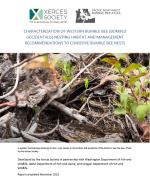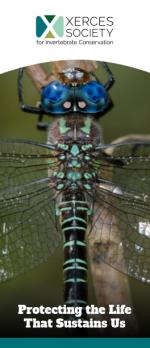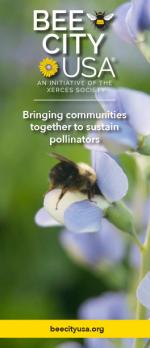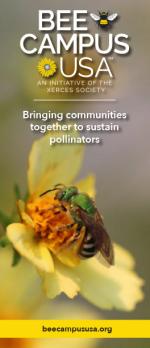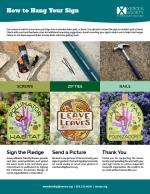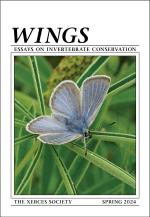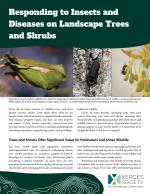As a science-based organization, the Xerces Society produces dozens of publications annually, all of which employ the best available research to guide effective conservation efforts. Our publications range from guidelines for land managers, to brochures offering overviews of key concepts related to invertebrate conservation, from books about supporting pollinators in farmland, to region-specific plant lists. We hope that whatever you are seeking—whether it's guidance on making a home or community garden pollinator-friendly, advice on developing a local pesticide reduction strategy, or detailed information on restoring habitat—you will find it here!
Find Publications
Use the search functions to sort by publication type (books, guidelines, fact sheets, etc.), location, and/or subject (agriculture, gardens, pollinators, pesticides, etc.).
Essays on Invertebrate Conservation
“Protecting the life that sustains us” is not just a tagline for the Xerces Society; it is the principle that guides us every day. We hope that the articles in this issue of Wings will help to explain why this is important and illustrate some of the diverse ways in which we work to embody this principle. Thank you for your support of our work.
As populations of a variety of bumble bee species, including the western bumble bee (Bombus occidentalis), become increasingly rare, protecting and expanding high-quality habitat is essential. In addition to flowering plants on which to forage, bumble bees require nesting and overwintering habitat. While a substantial amount is known about what constitutes high quality foraging habitat, much less is known about where the western bumble bee overwinters and nests.
This brochure introduces the Xerces Society for Invertebrate Conservation and explains what we do and why.
Bringing Communities Together to Sustain Pollinators
Bee City USA brings communities together to sustain pollinators by increasing the abundance of native plants, providing nest sites, and reducing the use of pesticides. Affiliates of Bee City USA also work to inspire others to take steps to conserve pollinators through education and outreach. Learn how your community can join Bee City USA.
Bringing Communities Together to Sustain Pollinators
Bee Campus USA brings college communities together to sustain pollinators by increasing the abundance of native plants, providing nest sites, and reducing the use of pesticides. Affiliates of Bee Campus USA also work to inspire others to take steps to conserve pollinators through education and outreach. Learn how your college can join Bee Campus USA.
Visitor Etiquette for Sustainable Firefly Tourism
This easy-print Visitor’s Etiquette Guide can be displayed or distributed by site managers and volunteers before events to promote sustainable firefly tourism. Three copies can be printed on a single sheet of letter paper using a small office printer, making it easy to share with participants before and during events.
Also available in Spanish, French, and Simplified Chinese.
An instructional insert explaining how to hang a Xerces Society yard sign from the gift center using screws, zip ties, or nails.
under the Endangered Species Act and to Concurrently Designate Critical Habitat
The Xerces Society and our conservation partners at the Center for Biological Diversity have submitted a joint petition for the emergency listing of the Bethany Beach firefly (Photuris bethaniensis)—with a request for the concurrent designation of critical habitat—under the federal Endangered Species Act (ESA).
Essays on Invertebrate Conservation
There seems to be a constant flow of bad news about environmental losses and declining wildlife populations. But there are also individuals and organizations working to create positive change, helping to turn the tide and bringing hope for the future.
This fact sheet discusses why insecticides and fungicides shouldn’t be your first choice for treating trees and shrubs, outlines a prudent approach to handling possible insect and disease issues, and offers smarter strategies for maintaining healthy trees and shrubs.


